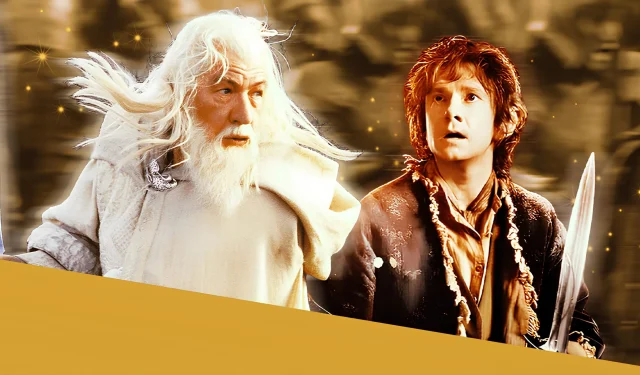
Exploring the Disparity: The Hobbit Film Trilogy Versus The Lord of the Rings
J.R.R. Tolkien’s The Hobbit stands as a timeless literary masterpiece, captivating readers with its rich narrative and imaginative world. However, the cinematic adaptation of this beloved story into a trilogy has sparked considerable debate regarding its effectiveness compared to the acclaimed The Lord of the Rings films. This article dives into the reasons why The Hobbit trilogy did not achieve the same level of excitement or success as its predecessor.
Adaptation Challenges
One of the primary factors contributing to the trilogy’s lukewarm reception is the challenge of adapting a relatively brief novel into three feature-length films. The original book, which focuses on Bilbo Baggins’ adventurous journey, is concise, yet the films attempted to expand this narrative significantly. This expansion often led to unnecessary subplots that deviated from Tolkien’s central themes, ultimately diluting the story’s charm.
Character Depth and Development
In contrast to the richly developed characters in The Lord of the Rings, the adaptation faced criticism for its portrayal of key figures in The Hobbit. Characters such as Thorin Oakenshield struggled to resonate with audiences, as their arcs seemed hastily constructed and less compelling. Additionally, the film’s reliance on CGI and action sequences overshadowed the nuanced story and character interactions that fans valued in Tolkien’s writings.
Perception of Tonal Consistency
The tonal inconsistency between The Hobbit movies and their predecessor is another area of concern. While The Lord of the Rings maintained a serious and epic tone throughout its trilogy, The Hobbit oscillated between humor and drama. This inconsistency left viewers uncertain about the intended emotional experience, detracting from the overall impact of the films.
Recent Developments and Cultural Implications
In recent years, discussions surrounding adaptations of Tolkien’s works have gained traction, especially with the rise of streaming platforms and renewed interest in fantasy genres. This shift prompts a reevaluation of how adaptations can capture the essence of the source material while innovating to engage new audiences. Future adaptations, such as Amazon’s The Lord of the Rings: The Rings of Power, reflect these evolving approaches, underscoring the possibility of success through deeper respect for character development and narrative integrity.
“The challenge remains in balancing fidelity to Tolkien’s legacy with the demands of modern storytelling.”
Conclusion
Ultimately, while The Hobbit is cherished as a literary classic, its translation into a film trilogy fell short of expectations for many fans. By analyzing the adaptation’s challenges, character portrayals, tonal shifts, and the evolving landscape of fantasy storytelling, we gain valuable insights into what makes a cinematic experience resonate. As audiences continue to seek engaging narratives, the lessons learned from The Hobbit may guide future adaptations toward greater success.




Leave a Reply